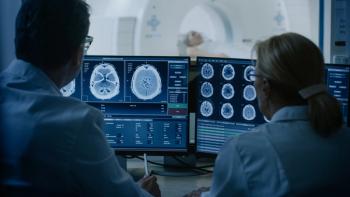
5 Things Every Pharmacist Must Know About DOACs
Direct-acting oral anticoagulants, alternatives to warfarin, may be less dangerous, but pharmacists still must help keep patients safe.
Do pharmacists know everything they need to about direct-acting oral anticoagulants (DOACs), which are an alternative to warfarin, and include apixaban (Eliquis), dabigatran (Pradaxa), rivaroxaban (Xarelto), edoxaban (Savaysa), and betrixaban (Bevyxxa)?
As their name implies, DOACs work fast, 1 to 3 hours after a patient takes a pill. But here are 5 other things about DOACs that pharmacists may not know:
1. In an electronic questionnaire to 143 providers, just 55% to 58% recognized that it is unsafe to proceed with an invasive procedure.1 There are many new drugs entering the market, and many providers are so specialized in their area of expertise that they do not recognize these new drugs as blood thinners. Patients are at risk of undergoing invasive procedures, including surgery, while inappropriately staying on these blood thinners. They should be taken off the blood thinner temporarily for the high-risk procedure and then restarted after the risk of bleeding is over. This is scary, because the results can be bloody and dangerous. But the good news is that pharmacists can volunteer information and keep patients safe.
2. If a pharmacist sees a prescription for Xeralto and enoxaparin at the same time or any DOAC and low-molecular-weight heparin (LMWH), that is a
3. Aspirin may no longer be needed once a DOAC is started. It is best to have the patient double-check with the doctor who originally prescribed the aspirin to see if it is still needed on the new DOAC regimen. The same is true for other antiplatelet drugs, such as Brilinta and Plavix. This decision cannot be made by the pharmacist. It must be made by the cardiologist or another medical professional with knowledge of the patient's health status, who can answer the question: how high is the risk of a fatal blood clot, and how high is the risk of a fatal bleeding event?
4. DOACs are replacing warfarin. They do not require lab monitoring. They do not have a long list of drug interactions
5. The FDA has approved 1 reversal agent, idarucizumab for dabigatran. Several other reversal agents are under final phases of development, such as andexanet alfa and PER977 (ciraparantag).2 But until reversal agents are readily available, know that DOACs are proving to be safer than warfarin, even without a reversal agent. In a study, DOAC patients with major bleeding had a fatality rate of 6% to 9%. In the warfarin patients, the fatality from major bleeding was 9% to 13%.3
When DOACs first became available, I was reluctant to recommend them. I thought, “What else are they going to discover now that these drugs have hit the masses? Are there hidden dangers we will unfortunately discover? Time will tell.”
Time has told, and I have let my guard down. The DOACs have proven themselves safe and very effective. But pharmacists should nevertheless be aware of all their risks.
References
1. Olaiya A, Lurie B, Watt B, McDonald L, Greaves M, Watson HG. An observational study of direct oral anticoagulant awareness indicating inadequate recognition with potential for patient harm. J Thromb Haemost. 2016;14(5):987-90. doi: 10.1111/jth.13288.
2. Hussain SS, Tyroch AH, Mukherjee D. Reversal of Newer Direct Oral Anticoagulant Drugs (DOACs). Cardiovasc Hematol Agents Med Chem. 2017;14(2):76-81. doi: 10.2174/1871525714666160524144359.
3. Chai-Adisaksopha C, Hillis C, Isayama T, Lim W, Iorio A, Crowther M. Mortality outcomes in patients receiving direct oral anticoagulants: a systematic review and meta-analysis of randomized controlled trials. J Thromb Haemost. 2015 Nov;13(11):2012-20. doi: 10.1111/jth.13139.
Newsletter
Stay informed on drug updates, treatment guidelines, and pharmacy practice trends—subscribe to Pharmacy Times for weekly clinical insights.


















































































































































































































